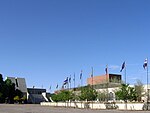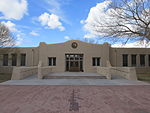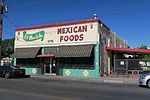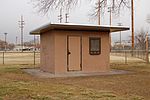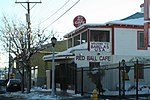Old Armijo School
1914 establishments in New MexicoNational Register of Historic Places in Albuquerque, New MexicoNew Mexico State Register of Cultural PropertiesPublic elementary schools in New MexicoSchool buildings completed in 1914 ... and 2 more
School buildings on the National Register of Historic Places in New MexicoSchools in Albuquerque, New Mexico

The Old Armijo School, also known as the Ranchos de Atrisco School, is a historic school building in the South Valley area of Albuquerque, New Mexico. It is notable as one of the only surviving school buildings attributed to Atanasio Montoya, a noted educator who reformed and modernized the Bernalillo County school system in the early 20th century. The school was added to the New Mexico State Register of Cultural Properties and the National Register of Historic Places in 1982.
Excerpt from the Wikipedia article Old Armijo School (License: CC BY-SA 3.0, Authors, Images).Old Armijo School
Isleta Boulevard Southwest,
Geographical coordinates (GPS) Address External links Nearby Places Show on map
Geographical coordinates (GPS)
| Latitude | Longitude |
|---|---|
| N 35.056111111111 ° | E -106.67055555556 ° |
Address
Old Armijo School
Isleta Boulevard Southwest
87190 , Armijo
New Mexico, United States
Open on Google Maps

